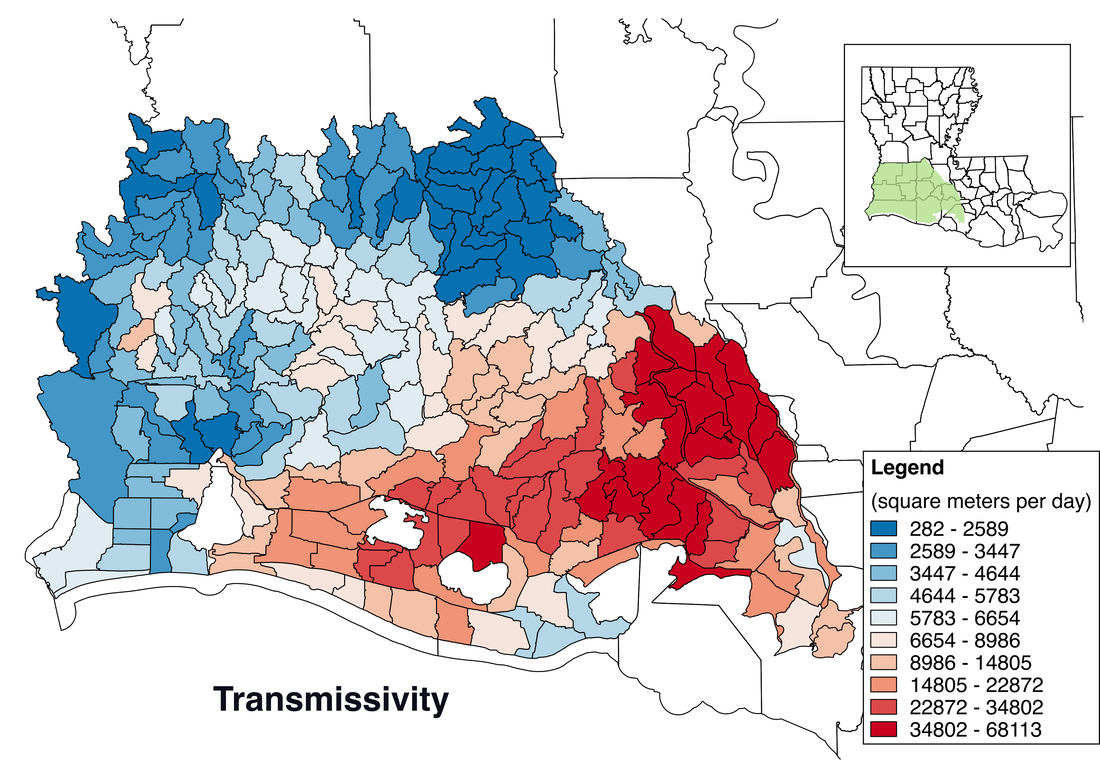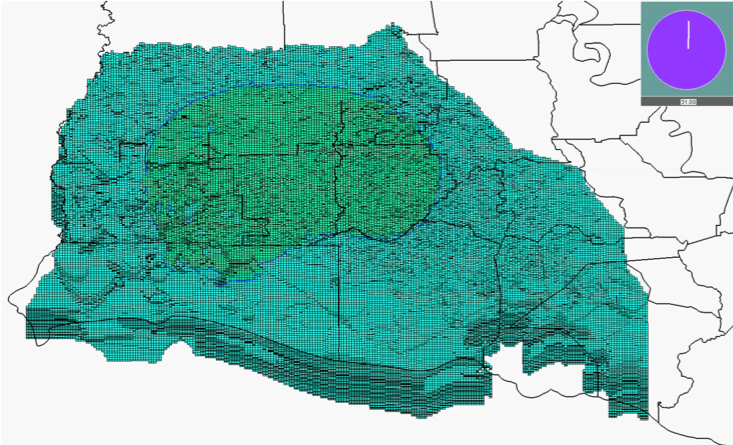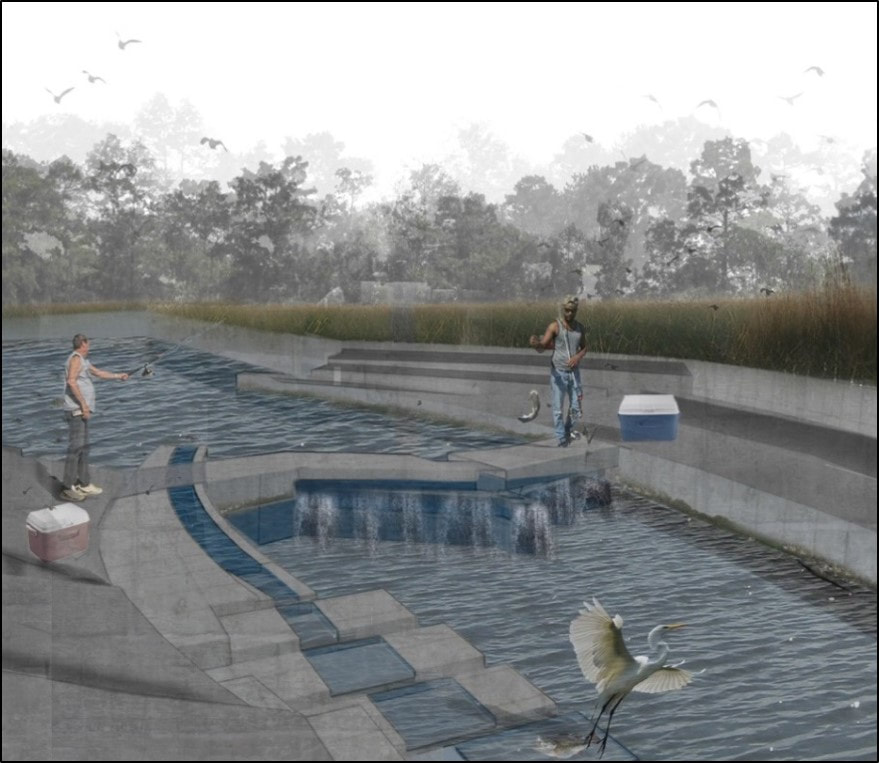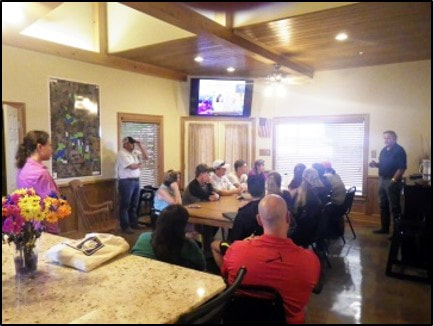Managed Aquifer Storage and Recovery in Coastal Louisiana
Problem
Despite relatively abundant rainfall and surface water, groundwater is being overused across the Southeastern United States. Coastal Louisiana is no exception.
|
Consequences
Overuse of coastal aquifers leads to subsidence and salt water intrusion, accelerates coastal land loss, and devastates coastal communities through the loss of available freshwater for drinking and economic activities.
|
Possible Solution
During high-flows, clean surface water is pumped into the aquifer for storage and later use during droughts and peak demands.
This activity combats subsidence and provides a freshwater buffer to reduce salt water intrusion. |
Research Objective:
Investigate feasibility of implementing a sustainable water management solution using engineered wetland systems and water treatment centers in conjunction with Aquifer Storage and Recovery (ASR).
Approach:I. Surface water hydrology
II. Groundwater hydrology III. Social and economic expectations IV. Outreach and Education |
Surface water hydrology
|
Analysis of Water Surplus/Deficit with and without ASR:
|
Groundwater hydrology
|
Groundwater Model with and without ASR:
|
Above: MODFLOW Model of Chicot Aquifer at 1 km^2 grid
Left: Transmissivity of aquifer aggregated at HUC12 scale for site selection suitability
|
social and economic expectations
Systematic introduction and coordination with community:1. Coordinate interviews with people currently using ASR systems to gather more information
2. Connect with local stakeholders to determine potential support and analyze the technical and economical implementation of ASR 3. Research into economic opportunities to identify revenue options for farmers to offset costs of ASR units |
ABOVE: Meeting with local stakeholders and policy makers to discuss ASR systems
LEFT: An example of a developed pilot-site rendering to engage policy makers and stakeholders
|
outreach and education
Engaging the community to create a more sustainable water-management plan:
|
1. Discuss wetland filtering and storage and ASR topics among stakeholders
2. Recruit experts (researchers, consultants, water managers) to speak publicly about water storage alternatives 3. Provide resources (fact sheets, graphics, web resources, and visualizations) to the public, utilities, municipalities, and other water officials 4. Collaborate with the Office of Conservation, Parish boards and commissions, LA Water Resources Commission, and the Louisiana State Law Institute for further outreach efforts |
ABOVE: Design scenario of an integrated solution to ecotourism in combination with engineering landscapes for ASR systems
|







